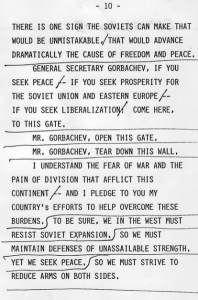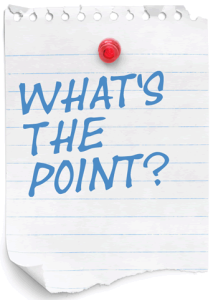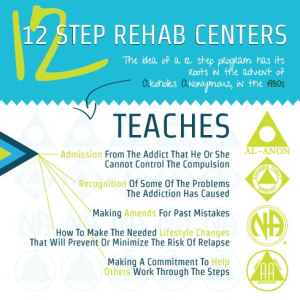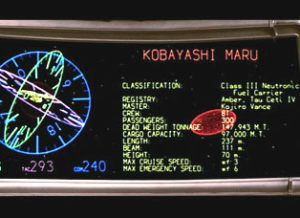Tear Down The Barrier To The Truth About Addiction!
In an imperfect addiction industry, there are many things in need of improvement. But there is one obstacle, that through the decades, has grown to underpin and surround the industry, forming a blockade that preserves unproven beliefs and practices while keeping out new insight, understanding and unimagined opportunity.
Tearing that barrier down, clears the way for great things.
On Tearing Down and Building Up
Have you noticed how easy it can be to tear something apart that might have taken years to build? 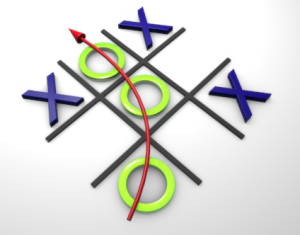 Maybe a respected theory, piece of research or a business. How it can make you feel all smart to put it under a magnifying glass to find the miss-connected dots, faulty conclusions or even cases where rules and reason were tossed out to force a point?
Maybe a respected theory, piece of research or a business. How it can make you feel all smart to put it under a magnifying glass to find the miss-connected dots, faulty conclusions or even cases where rules and reason were tossed out to force a point?
Have you found how much harder it can be to construct, from the same data used by the others, something entirely new, addressing a tangible need that was thought out of reach? And when you took the risk and did it, were you prepared for the backlash from those whose beliefs, work and reputations hinged on the old views and positions?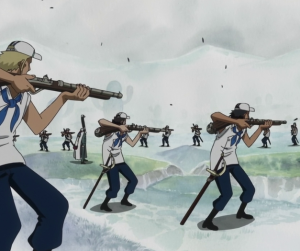
Knowing what lay ahead, might you choose to stick with the tearing down part next time and leave the building up work to some other folks to take care of later?
I think the truth in this thinking helps explain why we have so many people that make a living and a name for themselves by tearing down other people’s ideas and work. And why so few of them, in turn, offer up new ideas of their own and then stand to defend them.
In fact, I think it might be why we see so few real breakthrough concepts these days, with most “new” contributions, from widely ranging fields including addiction treatment, turning out to be little more than executional variations on established ideas.
But there will always be exceptions.
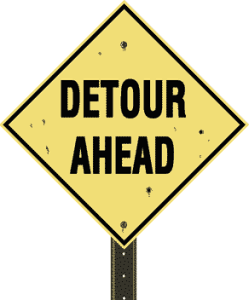 Brief historical detour here – but it makes a point, I promise.
Brief historical detour here – but it makes a point, I promise.
Ronald Reagan was one of those great exceptions. When he called for Soviet leader, Mikhail Gorbachev, to tear down the wall separating East and West Berlin, he taught us a lot about what makes for a breakthrough idea.
Quick background: The Berlin Wall stood as one of the most visible barriers to achieving the “peace, prosperity and liberty” that Gorbachev publicly called for as he pursued the long-held policies of oppression that preceded him.
When Reagan traveled to Berlin in June 1987 to speak to the German people, he could have scored political points by using his presidential platform to place a spotlight on Gorbachev’s hypocrisy. He could have taken the risk of embarrassing the Soviet leader by placing his policies under a  magnifying glass and exposing their blatant flaws.
magnifying glass and exposing their blatant flaws.
But Reagan wasn’t out to tear apart or tear down Soviet policies to make himself look good. His aim was to force Gorbachev to become the reformer he claimed to be, and to help bring the world a bit closer to lasting peace.
And so against the advice of most people in his administration, and many others whom he consulted, Reagan took to the International stage, and there, with the Brandenberg gate and Berlin Wall just feet away, he named the wall for what it was, and then he directed his words to the Soviet leader and called for him to tear it down.
Had Reagan taken the position that everyone already knew there could be no progress as long as the wall stood in the way, his speech would have been very different. He might have gone right to the “tear the wall down part”, and then on to the rest of his message. Had that been the case, my guess is that those listening, including Gorbachev, would have heard the demand as another sound bite in another speech by a Western leader. My guess is that the mechanism of change would not have turned on.
But Reagan knew for his words to have impact, the first task was to lay out exactly what the wall was and what it represented. He established that the wall did not stand as a buffer to safeguard the East from Capitalist assault, but as the greatest single barrier to freedom. He called out the true nature of Communism that enslaved the people of East Berlin. He exposed the truth of its totalitarian oppression in stark contrast to the reform and openness claimed by its leaders.
Reagan wasn’t out to make headlines that day, he was making clear the point that Gorbachev’s words of change and claims of progress had no value without real meaning and specific action to back them up.
And with this correctly and clearly spelled out, he dared to challenge the Soviet leader publicly, that if he truly sought reform, then he could begin by removing the most visible barrier to freedom in the communist empire. He could tear down this wall.
Compelling stuff, right? He’d effectively made the case against the wall and he’d called for action, but removing the wall wasn’t the point; it would merely clear the way for true reform to begin.
The point of tearing down is to prepare for the building up. Nothing would be gained for the German people through a pile of symbolic rubble where the wall had stood.
So here the speech shifted gears, and Reagan painted a picture of what could be, once the barrier was dismantled. He pledged to support Gorbachev in his efforts to build up a new and prosperous nation in the place of the old tyrannical rule and regimented controls. And he introduced specific, meaningful and achievable goals that could motivate and help guide their work.
It took a couple of years, but when the wall came down, the flaws in the system that had bound the German people were exposed and they began to see the promise of freedom.
And Here’s The Point (Thank goodness, right?)
These same principles apply to any meaningful efforts to reform the addiction industry. There simply can’t be progress in the battle against addiction without first fully understanding what it is we are battling, and then calling it out for all to hear
There was a time when I would have said to all this talk about definitions and such: Isn’t this all just a bit too legalistic? I mean we’re talking about addiction for crying out loud. Why can’t we just treat it?
But fast-forward to today and the point becomes clear.
Because how addiction is defined tells us what it is we need to treat. And it tells us what a proper treatment method should be able to achieve.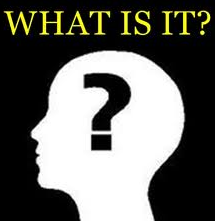
But it’s not only the go-to resource to guide treatment, it also influences where to direct research, how the legal system should address those affected, what prevention strategies might be effective and more.
A well conceived, supported and defensible definition of addiction is an essential first step to our successfully reining in what currently is an out of control situation.
How Does The Current Explanation Stack Up?
So what about it, what does the official industry definition of addiction tell us? When we strip away the excess words, it says three things:
- Addiction is a brain disease: An impaired neurotransmitter regulating system in the brain’s reward pathway leads people to substance use.
- Addiction is a chronic brain disease: It is serious, incurable and unending.
- Addiction is a chronic, relapsing brain disease: While there might be periods of improvement, they will be followed by worsening symptoms.
The 3 elements currently defining addiction – brain disease, chronic condition, relapsing symptoms – really limit us to two reasonable goals for treatment.
First would be to treat the impaired system in an effort to lessen its harmful effect.
 This option is ruled out because neither the impairment nor its effect, in terms of lower neurotransmitter volumes, can be detected or quantified. (We can’t find anything to treat)
This option is ruled out because neither the impairment nor its effect, in terms of lower neurotransmitter volumes, can be detected or quantified. (We can’t find anything to treat)
Second is to manage the chronic symptoms of the disease.
This is the option pursue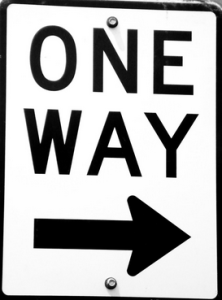 d for the past 75 years without success, using treatment based on lifestyle management training and prescribed pharmaceuticals. However, unlike with diabetes, the chronic disease cited by the industry as validation of their diagnosis and treatment strategy, in the case of addiction, we have nothing tangible to work with other than the addiction behavior itself.
d for the past 75 years without success, using treatment based on lifestyle management training and prescribed pharmaceuticals. However, unlike with diabetes, the chronic disease cited by the industry as validation of their diagnosis and treatment strategy, in the case of addiction, we have nothing tangible to work with other than the addiction behavior itself.
In other words, though the historic assumptions about the brain and its role in addiction were adequate to construct a disease model offering a believable explanation and definition of addiction, without objective evidence as support, it cannot direct meaningful treatment, let alone drive a meaningful industry. 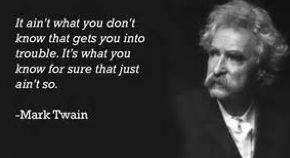 Ultimately, the long-held assumptions must come up with factual evidence to back them up if they are to stand; especially as cutting edge research continues to add to a mounting body of evidence contradicting the assumptions and revealing the truth.
Ultimately, the long-held assumptions must come up with factual evidence to back them up if they are to stand; especially as cutting edge research continues to add to a mounting body of evidence contradicting the assumptions and revealing the truth.
No matter how many DSM’s (Diagnostic and Statistical Manual of Mental Disorders)  are issued reflecting who knows how many carefully wordsmithed definitions and diagnoses of addiction; no matter how sensitively the authors edit language to lessen the potential for shame, blame or stigma, and no matter how broadly they expand addiction’s scope to include the latest in a growing list of dependencies, until the industry stands up to the truth and tears down the barriers created by its unsupported, but relentlessly pursued premise, there can be no real progress. And there certainly can be no victory.
are issued reflecting who knows how many carefully wordsmithed definitions and diagnoses of addiction; no matter how sensitively the authors edit language to lessen the potential for shame, blame or stigma, and no matter how broadly they expand addiction’s scope to include the latest in a growing list of dependencies, until the industry stands up to the truth and tears down the barriers created by its unsupported, but relentlessly pursued premise, there can be no real progress. And there certainly can be no victory.
Where Is Our Ronald Reagan?
Years ago, when I began rattling cages over the discrepancies between what was becoming known about addiction vs. what continued to be taught, John Schwarzloose, industry leader and developer of the treatment program shaping the Betty Ford Center (now Hazelden Betty Ford Foundation) advised me there was only one voice capable of bringing down the barriers and clearing the way for true change[i].
He explained that the combined voices of parents, particularly mothers, fighting for their (cubs) would be heard. That if moms learned of a better way to treat addiction, they would demand it for their loved ones. And the industry would have to listen.
And I think if we were proposing a new way to execute the 12 steps or to modify the language used in defining addiction to clarify its meaning or soften the impact, I can see moms getting behind the changes and the industry responding to their demands.
But that’s not the kind of change we’re discussing. We’re talking about turning the whole thing upside down. We’re talking about presenting the evidence that redefines addiction as a wholly treatable condition to be fully overcome. And we’re proposing a full recovery treatment process, while built on the same three pillars supporting the 12-Step method – God, Character and New Behavior – would be presented without compromise or apology, and with all the lessons, tools and benefits of both faith and modern science and what they continue to teach us.
And while you’d think such news would encourage the moms closest to the problem, there are several barriers that likely would stand in the way of even an army of moms (imagine the power of that) being able to muster the power to bring about the kind of change needed.
What barriers?
First, is the intense emotional attachment to the 12-step method that people feel, even while they acknowledge its high failure rate and other warts. It’s like the fierce loyalty that people have to their faith and the people they love.
Second, is the tremendous relief, maybe it’s the absolution of responsibility and guilt that accompanies the no-fault chronic disease diagnosis and definition of addiction. It’s like an unlimited “get out of jail free” card excusing everyone involved, and I’ve found it pretty hard to pry out of people’s hands.
And finally, is how thoroughly the premise has permeated our society, that it now underpins millions of jobs, thousands of professional reputations, hundreds of curriculums taught in countless schools, parent groups, churches, judicial organizations and more. Imagine the fallout if the industry were to acknowledge its flawed premise and treatment strategy.
Anyone Up For Some Finesse?
One adviser suggested I try to finesse the situation, suggest leaving the premise in place but focus on replacing some of the steps to incorporate lessons leading to full recovery including instruction in replacement behaviors, full character development and stress-induced scenarios to cement new learning?
focus on replacing some of the steps to incorporate lessons leading to full recovery including instruction in replacement behaviors, full character development and stress-induced scenarios to cement new learning?
I’ll answer with another question. Could we continue the instruction about addiction being a chronic, relapsing brain disease stemming from an impaired midbrain reward system, and continue supporting the essence of the 12-Step method for managing chronic addiction symptoms, but with a few steps added to overcome addiction and achieve full recovery?
Can we preach powerlessness and acceptance of addiction, while teaching new ways to redevelop personal character and adopt rewarding new behaviors to replace harmful addiction behaviors? Can we present the same research as scientific evidence of both?
I did look at the possibility of separating the premise from the treatment method, and simply re-working the 12-step method so that it targets full recovery. (Not one of my better moments to be sure.)
In the end, though the established addiction premise and the established treatment method have grown so entangled, that they’ve come to be seen as one. This is not something that just happened. It took a lot of effort and money, about a trillion dollars spent over 40 years, an average of $25 billion a year, to indoctrinate people in that belief system.
Beginning in elementary school generations have been taught that somewhere between 15% and 20% of all people are at greater risk of developing addiction due to a brain system impairment that keeps them from feeling normal pleasures and leads them to use substances in response.
A trillion dollars (that’s 12 zeroes)  has been spent telling people that when these vulnerable people learn to depend on their substances as the only way to feel a reward, they’ve advanced to full-blown chronic addiction and require treatment. Treatment is synonymous with the 12-step method in any of its themes, and aims to help chronically addicted people learn to manage their addiction symptoms, and live substance free, one day at a time.
has been spent telling people that when these vulnerable people learn to depend on their substances as the only way to feel a reward, they’ve advanced to full-blown chronic addiction and require treatment. Treatment is synonymous with the 12-step method in any of its themes, and aims to help chronically addicted people learn to manage their addiction symptoms, and live substance free, one day at a time.
Convincing people of this synergy looks to be the one goal that the industry’s promotional spending achieved. And now, we’re kind of stuck without an easy way to turn. There doesn’t seem to be a workable strategy to disentangle the premise and treatment to address each separately and possibly preserve portions of the industry foundation. And the industry’s understandable self-interest does not accommodate our tearing both down to be replaced with a ground-up full recovery premise and program.
We Can Never Give Up.
But There Is A Point, When We Are Blocked On All Sides From Achieving Success, For Us To Take A Lesson From Captain James T. Kirk 
It’s Time To Take A Page From Kirk’s Playbook And Redefine The Turf
First, We Make The Case Why The Old Must Be Torn Down. And For What Should Take Its Place. But We Can’t Wait For The Old To Fall. We Start Now. We Build New, From Scratch, With A New Mission.
We Don’t Build An Industry, But A Nimble, Continuously Improving Movement. We Focus On Saving Lives, Ending Slavery To Addiction And Its False Teachings.
We Build Along Side What Is Standing, In Order To Make The Distinction Clear.
And Through It All, We Start Building Bright Futures, Free Of Addiction.
Could It Happen?
When I speak at PTA conferences on what science is uncovering about the brain and addiction[ii], mothers, teachers and administrators tell me how hungry they are for new information that neither comes across like a cheer squad for the latest anti-drug campaign, nor as a venomous attack on those with addiction or the people who treat them.
During our discussion period, those attending generally ask what they can do with the information, and I see their frustration as they recognize that even “alternative” addiction treatments still focus on managing the symptoms of chronic condition.
When they hear the truth, backed by facts, and they have no stake in entrenched views and methods. They have no time to worry about reputations, tradition and protocol. Their concern is for their kids, families, schools and communities.
And when I hear them, I know John Schwarzloose was right, that mobs of parents, particularly moms, would stand to demand the truth and change. And I can’t imagine any force greater to be in the front lines as we demand the barrier be torn down.
But I also recognize that the depth and degree of change needed will take more. We are going to have to build the new way and prove its premise. Then watch those barriers crumble.
Lessons From God, Ronald Reagan and James T. Kirk
I believe we also must learn from the timeless lessons throughout the Bible and history, from leaders like Ronald Reagan and Star Ship Captain James T. Kirk (yes, I know he’s a TV character).
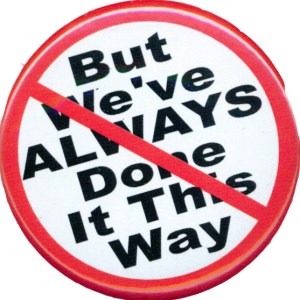 And finally, as I’ve learned from business, with our target clearly defined and a clear, achievable and measurable objective defined, we start building, making certain to keep our focus on the goal, the people in need, and never compromise for the sake of preserving what’s gone before.
And finally, as I’ve learned from business, with our target clearly defined and a clear, achievable and measurable objective defined, we start building, making certain to keep our focus on the goal, the people in need, and never compromise for the sake of preserving what’s gone before.
First, We must Define Addiction
The Old (Current)
Addiction is defined as a chronic, relapsing brain disease that is characterized by compulsive drug seeking and use, despite harmful consequences.
Its Objective
Manage addiction symptoms. Adopt a lifestyle that is without drugs, alcohol or other addiction behavior symptoms. Expectations include relapse and harmful consequences.
The New Note:Working definition drawn from recent research re- the brain, addiction, faith and character, learning science, decision making, cell growth and change, replacement behaviors, motivation and more.
Addiction is a learned behavior satisfying a human need for reward, that with repetition has bonded with the fully developed Prefrontal Cortex, and no longer serves as the means to meet a need, but has become the urgent need itself.
Its Objective
Measurable full recovery from addiction. Addiction is overcome. Expectations are to enjoy full, productive, extremely rewarding lives, free of addiction. To be free.
For Those Who Are Not Long-Time Fans Of Start Trek And Captain Kirk, (How Could That Be?) The Following Is To Answer Your Question, So What is a Koyayashi Maru?
The Kobayashi Maru was introduced in Star Trek II: The Wrath of Khan. It’s a Starfleet Academy simulator that is impossible to beat; the intended purpose of the test is to see how a potential captain deals with defeat and death. In the entire history of Starfleet only one cadet has ever actually bested the unbeatable test, and it was a young James Kirk. For much of Wrath of Khan the answer to how he did it remains a mystery, but eventually, when things seem darkest for the crew of the USS Enterprise, it’s revealed: Kirk changed the program.
(Knowing Kirk’s History and his) slightly unorthodox approaches to problem-solving … I understand why someone might jump to the conclusion that Kirk is a cheater and a rule breaker. But he’s not. As a Starfleet captain … he’s often required to make hard decisions when faced with situations more nuanced than allowed for by regulations.
The Kobayashi Maru? That was Kirk being Kirk, and it wasn’t cheating. It’s important to understand how Kirk approached the test – he thought it was fundamentally unfair. To Kirk the Kobayashi Maru itself was cheating. He believed the idea of an unwinnable scenario to be ludicrous; as he saw the world, any problem could be overcome eventually with smarts and hard work. The equivalent here was being given a math test with the problem “2+2=?” and being told that “4” was the wrong answer.
The test was the problem, and Kirk solved that problem. It’s never explicitly stated what Kirk changed when he hacked the program (in a Star Trek novel it’s said that Kirk reprogrammed the Klingons to have a respectful fear of “The” Captain Kirk), but the gist of what we’re to understand is that Kirk didn’t hack the Kobayashi Maru to win, but rather to make it winnable. When Saavik accuses Kirk of cheating, he replies “I changed the conditions of the test!”
My thanks to Devin Faraci for this excellent explanation.
__________________
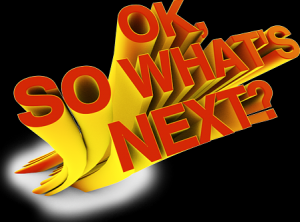 Stay tuned for The Stand’s own take on the original Kobayashi Maru strategy as it takes on the challenge of defeating addiction.
Stay tuned for The Stand’s own take on the original Kobayashi Maru strategy as it takes on the challenge of defeating addiction.
But first, I will be making the case for the new understanding of addiction and the appropriate goal of treatment.
[i] Note: Mr. Schwarzloose acknowledged the need for addiction treatment to respond to critical findings about the brain and addiction as revealed through recent research. He explained that change would not come from inside the industry, but from those outside demanding the change. He further explained that women, in particular mothers, had brought about rapid and dramatic change in several cases involving health care and the insurance industry, and recommended that I harness that power when there were specific changes defined.
[ii] Note: Conference presentations address only what the research has revealed and the possibilities it presents. They do not introduce recommendations, or treatment alternatives, and are qualified as having been reviewed by my science advisory board, but are not necessarily representing the views of the addiction industry.


